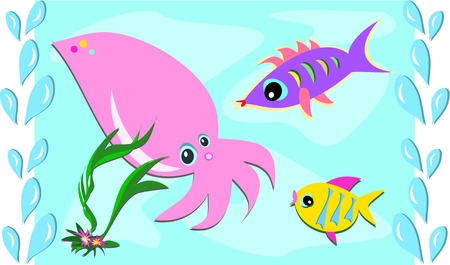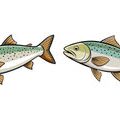1. Introduction: Navigating British Seasons
Keeping an aquarium in the UK is a truly rewarding experience, but it comes with its own set of unique challenges—largely shaped by Britain’s famously unpredictable weather. Unlike other regions where seasonal transitions are more pronounced or stable, the UK’s climate is characterised by swift changes, persistent rain, sudden heatwaves, and chilly spells that can all occur within a single week. For aquarists, this means that tending to your aquatic companions requires not just passion and patience, but also adaptability and vigilance throughout the year.
From the frosty mornings of January to the balmy evenings of August, each season brings its own nuances in temperature, humidity, and daylight—factors that directly impact water quality, fish health, and plant growth. The challenge lies in anticipating these shifts and responding with care and compassion, ensuring your underwater world thrives regardless of what’s happening outside your window.
Below is a snapshot of how British weather patterns typically affect aquarium conditions across the seasons:
| Season | Typical Weather | Aquarium Impact |
|---|---|---|
| Winter | Cold snaps, shorter days | Risk of temperature drops; reduced light for plants |
| Spring | Variable temps, increased rain | Fluctuating water temperatures; risk of algae blooms |
| Summer | Occasional heatwaves | Overheating risks; evaporation increases |
| Autumn | Crisp air, falling temps | Gradual cooling; preparation for winter needed |
This guide will explore how to adapt your aquarium care routine to each British season—with a focus on creating a safe haven for your fish and plants, no matter how capricious the weather may be.
Spring Awakening: Preparing for a New Cycle
As the British winter recedes and daylight hours begin to stretch, your aquarium enters a critical phase of renewal. Spring in the UK brings unpredictable weather—crisp mornings, sudden bursts of sunshine, and fluctuating temperatures—which can all affect your aquatic environment. It’s essential to prepare your tank and its inhabitants for these changes with compassionate attention and careful maintenance. Below, you’ll find practical steps to ensure your aquarium thrives as spring unfolds.
Essential Spring Maintenance Tasks
| Task | Why It Matters |
|---|---|
| Partial Water Change (20-30%) | Removes accumulated waste and refreshes minerals depleted during winter months. |
| Gravel Vacuuming | Prevents build-up of debris as increased daylight can stimulate algae growth. |
| Filter Cleaning (without removing beneficial bacteria) | Keeps water flow steady and maintains optimal filtration efficiency. |
| Glass Cleaning | Enhances viewing clarity and reduces unsightly algae on tank walls. |
Monitoring Water Quality with the Changing Light
The gradual return of longer days in Britain means your aquarium receives more ambient light, which can trigger algae blooms and affect water chemistry. Regular testing for ammonia, nitrite, nitrate, and pH is especially important during this period. Consider investing in a reliable UK-sourced water testing kit for weekly checks. Adjust feeding routines if fish become more active, but always avoid overfeeding—a common issue when temperatures rise.
Caring for Your Aquatic Community
Your fish and plants will respond to the seasonal shift. Look out for increased activity or breeding behaviour, particularly among native coldwater species. If you keep live plants, trim away any dead foliage to encourage new spring growth. Remember: gentle transitions are key—sudden changes in water parameters can stress your aquatic life.
A Season of Renewal
This time of year reminds us of nature’s resilience and the simple joys that come from attentive care. By embracing these seasonal routines, you’re not just maintaining a tank; you’re nurturing a thriving microcosm that reflects the very best of British compassion and stewardship.

3. Summer Strategies: Coping with Heatwaves and Sunlight
British summers may be famously unpredictable, but recent years have shown that heatwaves can arrive with little warning, posing unique challenges for aquarium enthusiasts. While most homes in the UK lack air conditioning, its crucial to stay vigilant during spells of uncharacteristically high temperatures, as both fish and aquatic plants are sensitive to rapid changes.
Approaches to Prevent Overheating
When the mercury rises, aquariums can easily overheat, especially if placed near windows or in conservatories. Here are some practical tips for maintaining a safe temperature:
| Strategy | Description |
|---|---|
| Shade & Positioning | Move tanks away from direct sunlight and cover them with light-blocking cloths during peak hours. |
| Ventilation | Open room windows where possible and use fans to circulate air around the tank (not directly on the water). |
| Ice Bottles | Add sealed ice packs or bottles of frozen tap water to the tank to gradually cool it down—avoid dramatic temperature drops. |
Combating Algae Blooms
The combination of warmth and extended daylight hours often leads to sudden algae blooms. Excessive algae can threaten water quality and obscure your tank’s natural beauty. To keep blooms in check:
- Reduce lighting duration using timers—aim for 6-8 hours daily.
- Position the tank away from windows or use blinds to limit natural light exposure.
- Increase water changes to remove excess nutrients that fuel algae growth.
Maintaining Stable Conditions During Heat Spells
Consistency is key to protecting aquatic life during fluctuating summer weather. Monitor water parameters more frequently than usual, paying attention to ammonia, nitrite, nitrate, and pH levels. If possible, invest in a digital thermometer with an alarm function for early warnings of rising temperatures.
A Gentle Reminder
Even in a country famed for drizzle and mild summers, climate change means British aquarists must adapt their routines. By being proactive and attentive, you safeguard the well-being of your aquatic companions—helping them thrive despite the unpredictability of our cherished British weather.
4. Autumn Adjustments: Preparing for the Shift
As summer draws to a close and the crispness of British autumn settles in, aquarium keepers across the UK must gently transition their care routines to reflect the shifting climate. The gradual drop in temperature, shorter daylight hours, and unpredictable weather patterns all have subtle yet significant effects on your aquatic environment. By thoughtfully adapting your practices, you help your fish and plants stay healthy and resilient as the seasons change.
Gradual Changes to Routine
Unlike abrupt changes that can stress aquatic life, autumn is a time for gentle, incremental adjustments. Begin by monitoring room temperatures more closely, as central heating may soon become necessary in many UK homes. Watch for fluctuations that could impact tank water temperature; consider using a reliable aquarium heater with an accurate thermostat to maintain stability.
Lighting Considerations
The decreasing natural light during British autumn affects not only your daily rhythm but also your aquarium’s ecosystem. Most aquariums rely on artificial lighting to supplement or replace sunlight—especially as gloomy days become more frequent. Gradually extend artificial lighting time if needed, but avoid sudden shifts that might confuse your fish or disrupt plant growth cycles.
| Lighting Adjustment Tips | Benefits |
|---|---|
| Increase timer by 15-30 minutes per week as daylight shortens | Prevents shock from sudden lighting changes |
| Use LED lights with adjustable intensity | Mimics natural light transitions |
| Avoid placing tank near draughty windows | Reduces temperature and light inconsistency |
Water Chemistry: Seasonal Watchpoints
The onset of autumn brings increased rainfall and changes in atmospheric pressure—both can subtly affect water chemistry in tanks, especially if you use tap water for top-ups or water changes. In some areas of the UK, tap water hardness may fluctuate due to seasonal supply variations. Test water regularly for pH and hardness (GH/KH), adjusting with conditioners or buffers as needed to maintain a stable environment.
Key Water Parameters to Monitor:
- Temperature: Maintain consistent levels with a heater if needed
- pH: Check weekly, as local water supply may shift seasonally
- Ammonia/Nitrite/Nitrate: Continue regular testing to prevent toxin build-up
Caring for Your Aquarium Community
Autumn’s arrival is a gentle reminder of nature’s cycles—a call to nurture our aquatic companions through careful observation and mindful adaptation. Through these small acts of stewardship, we ensure our aquariums remain safe havens amid the changing British seasons.
5. Winter Watch: Protecting Aquatic Life from the Chill
As winter sweeps across the UK, bringing brisk winds and frosty nights, aquarists face unique challenges in safeguarding their aquatic companions. British winters are notorious for their unpredictability—one day may be mild, while the next can bring biting cold and draughts that sneak through even the most well-insulated homes. Proactive care becomes essential to ensure that your aquarium remains a haven of stability amid the seasonal chill.
Insulation: Keeping the Cold at Bay
One of the first lines of defence against dropping temperatures is effective insulation. Position your aquarium away from draughty windows or external doors, and consider using insulating foam boards or specially designed aquarium backgrounds along the sides and back of the tank. These simple measures help reduce heat loss and shield your fish from sudden cold snaps—a common feature of British winters.
Consistent Heating: Avoiding Sudden Drops
Reliable heating is crucial during the colder months. Invest in a high-quality heater suitable for your tank size, and always use an accurate thermometer to monitor water temperature. Consider a backup heater for added security, especially if you keep tropical species sensitive to fluctuations. Heres a quick comparison of popular heating solutions:
| Heating Method | Pros | Cons |
|---|---|---|
| Submersible Heater | Easy installation, widely available, precise control | May need multiple units for large tanks |
| External Inline Heater | Saves space inside tank, even heat distribution | Requires external filter setup |
| Aquarium Heating Mat | Good for smaller tanks or specific areas | Less effective in larger set-ups |
Fish Welfare: Monitoring & Adjustments
Beneath the surface, winters impact can subtly affect fish behaviour and health. Observe your aquatic residents closely for signs of stress—such as lethargy or loss of appetite—and adjust feeding routines if needed, as metabolism may slow with cooler temperatures. Regularly test water parameters since winter central heating can increase evaporation rates, affecting pH and hardness.
Caring with Compassion During Cold Spells
The heart of winter aquarium care lies not just in technology, but in the daily acts of attention—checking equipment, topping up evaporated water with dechlorinated tap water (as per UK standards), and providing gentle reassurance to your fish. By adapting thoughtfully to Britains wintry temperament, you protect not only the health but also the wellbeing of every finned resident under your care.
6. Conclusion: Year-Round Care and Community Support
Looking after an aquarium in the UK requires more than just a love for aquatic life—it calls for an ongoing commitment to regular monitoring, adaptability, and drawing strength from the warm support of the British aquarist community. The ever-shifting British weather means that aquarists must remain vigilant throughout the year, adjusting care routines to keep fish and plants healthy through chilly winters, unpredictable springs, balmy summers, and damp autumns.
The Essentials of Ongoing Aquarium Care
| Season | Key Focus | Common Adjustments |
|---|---|---|
| Winter | Temperature Stability | Heater checks, insulation, reduce feeding |
| Spring | Water Quality | Increase water changes, monitor pH swings |
| Summer | Cooling Solutions | Add fans, increase aeration, manage algae growth |
| Autumn | Transition Prep | Check equipment before winter, adjust lighting schedules |
The Power of Regular Monitoring & Flexibility
The unpredictable nature of British weather means even seasoned aquarists must stay flexible—testing water parameters regularly and keeping an eye out for subtle changes in fish behaviour or plant growth. Small adjustments made promptly can prevent problems from escalating and ensure your underwater world remains a thriving habitat all year round.
Nurturing a Supportive Aquarist Community in the UK
No aquarist is an island. Across Britain, local clubs, online forums, and charity-led events offer invaluable advice, hands-on help, and a sense of belonging. Sharing experiences—be it a challenging algae bloom or tips on insulating a tank during a cold snap—fosters a spirit of togetherness that benefits both hobbyists and their aquatic companions. By supporting one another, we can create healthy tanks and stronger communities alike.
Caring for your aquarium through the shifting British seasons is an act of stewardship and compassion. With regular attention, flexibility in your approach, and encouragement from fellow aquarists, you’ll ensure your aquatic life flourishes—no matter what the British weather brings.


